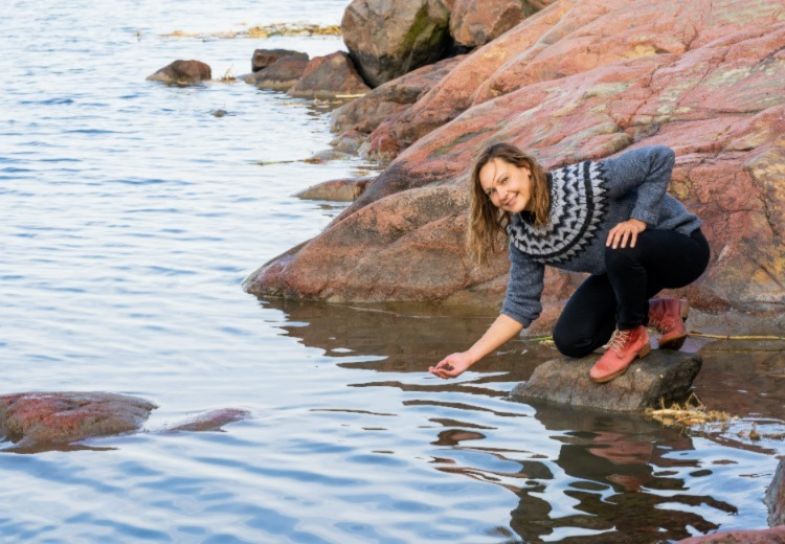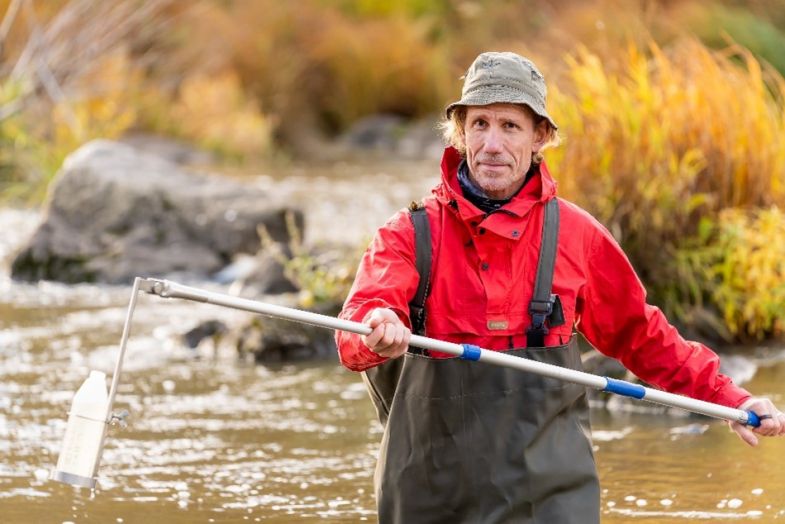
Science of the Changing Sea
The Baltic Sea is in many ways a unique research subject – at the same time, it is a young sea, but also one of the busiest and most polluted seas in the world. It has been called a laboratory, a time machine, and a pilot, as the conservation methods that have been developed for the Baltic Sea are applicable around the world. At the University of Turku, biologists, geographers, historians and researchers in natural sciences and maritime spatial planning are focusing on the current challenges. Six researchers reveal how their research aims to improve the state of the Baltic Sea.
Nearly 400,000 square kilometres of surface area and nine coastal countries. Organisms that get along both in saltwater and freshwater environments.
The Baltic Sea is a research subject that expands across different scientific disciplines and state borders. If you had to describe the sea with one word, it would be change.
“The Baltic Sea has been called a time machine. It is shallow and small, and many people live in the surrounding countries. Many environmental problems are first observed in the Baltic Sea. But, for the same reasons, once we take action to improve its state, we can also see the positive development first in the sea,” explains Associate Professor Jari Hänninen from the Biodiversity Unit of the University of Turku.
For the last few years, Professor of Geography Jukka Käyhkö has been involved in international projects that study the impact of the climate change on the Baltic Sea. He is one of the main authors of the Climate Change in the Baltic Sea 2021 Fact Sheet of the Baltic Marine Environment Protection Commission (HELCOM), which is a report addressed to decision-makers.
According to the estimates presented in the report, the temperature and sea level will continue to rise and the winter-time ice extent will decrease. These changes have various impact on the ecosystems and individual species in the Baltic Sea as well as on shipping and other human activities in the region.

Jukka Käyhkö’s research focuses on climate change and its impact and control. For HELCOM’s Fact Sheet, he compiled a section on the effects of the climate change on the runoff of the rivers draining into the Baltic Sea.
Furthermore, climate change will increase rainfall, especially in the northern parts of the catchment area. The more it rains, the more nutrients are washed to the sea from the agricultural land. Eutrophication is one of the greatest environmental challenges in the Baltic Sea. As the surface flows and river drainage increase, nutrients from cultivated lands will end up in the sea in increasing amounts.
“Winters are problematic. If the precipitation falls as rain instead of snow while the rate of evaporation is minimal due to low temperatures, plus there is no vegetation on the crop fields to consume the water, the excess surface runoff flows in the sea carrying sediments and nutrients with it,” says Käyhkö.
Eutrophication leads to the deterioration of the marine environment also from the perspective of recreational use and food production. In the Archipelago Sea catchment area, eutrophication is controlled by adding gypsum on the fields, as it retains phosphorus in the soil.
Käyhkö describes geography as multitasking where several matters are at hand at the same time. Geography is also a bridge-builder between different disciplines. The research is guided by an idea of a regional system: many stress factors and challenges put a strain on the Baltic Sea and geographers attempt to synthesize these to form a holistic, systemic picture.
“Let’s consider the catchment area of the Baltic Sea, which – in addition to the sea basin itself – consists of the surrounding land area from which the water flows into the Baltic Sea. We attempt to connect different natural processes and human activities, most often with the aid of geospatial data analyses, so that our overall understanding increases.”
According to Käyhkö, the Baltic Sea can function as a pilot for solving global challenges: conservation methods can be developed with extensive data and high-standard research, and they could be applied in various parts of the world in similar sea areas. The research results can both prevent problems before they occur or repair existing damage. One major issue is the high phosphorus content on the seafloor which causes internal nutrient load in the sea.
“We have seen a great deal of improvement and, for example, nutrient emissions to the Baltic Sea have decreased. However, nature recovers regrettably slowly when measured on a human time scale,” Käyhkö notes.
Read the whole article on the University of Turku website: Science of the Changing Sea
Text: Sara Harju
Photos: Hanna Oksanen
Translation: Mari Ratia
The article has been published in the Aurora magazine’s issue 1/2023.








